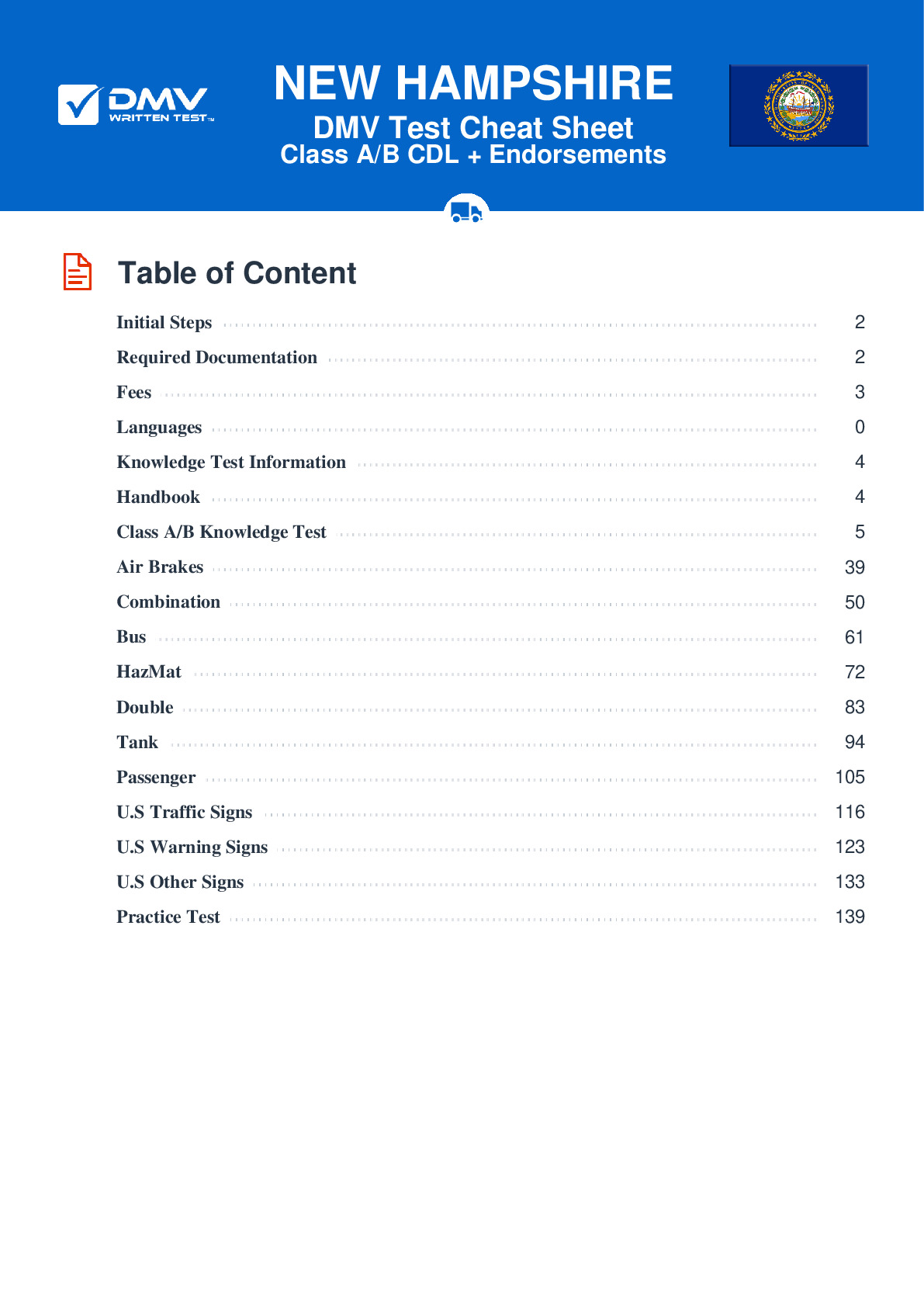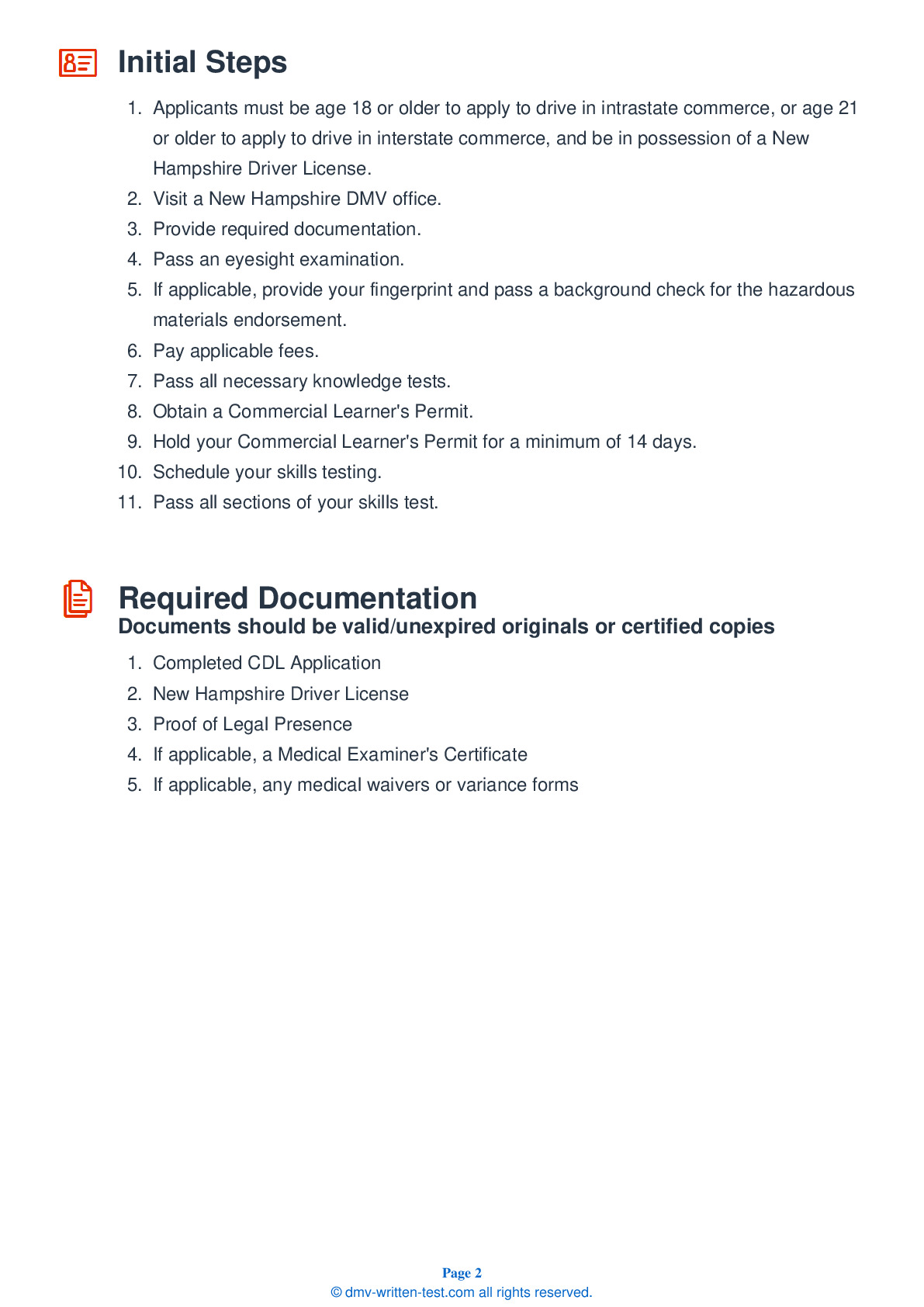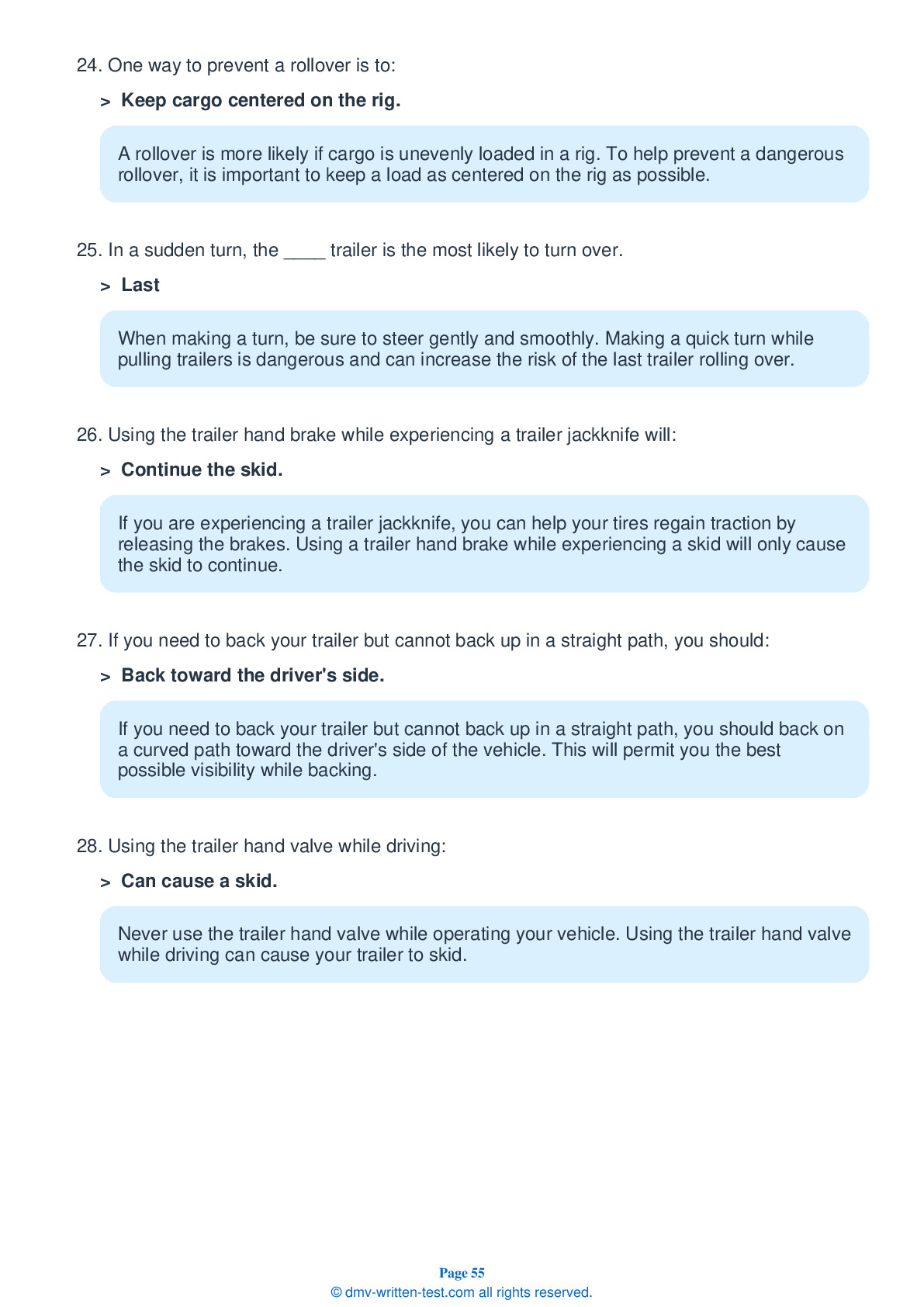Combination
All applicants who are applying for a Class A CDL should be prepared to take the Combination test. This test covers information found in Section 6 of the New Hampshire CDL Driver's Guide. Section 6 provides the information needed to safely operate tractor-trailers, doubles, triples, and straight trucks with trailers. The test is made up of 20 multiple-choice questions, and applicants will have 30 minutes to correctly answer a minimum of 16 questions. The Combination test is not a replacement for the Double/Triple endorsement test.
Number of Question
Passing Score
1. To prevent a rollover, cargo should be:
Explanation
Cargo weight should be evenly distributed within a trailer to reduce the risk of a rollover. Do not place too much weight on one side of a trailer.
2. A trailer that is too high:
Explanation
Before coupling together a tractor and a trailer, you should make sure the trailer is at the proper height. If the trailer is too low, the trailer nose may be damaged. If the trailer is too high, it may not be able to couple correctly.
3. Trailers manufactured after ____ must be equipped with Anti-Lock Braking Systems (ABS).
Explanation
Trailers and converter dollies manufactured on or after March 1, 1998 are required to have Anti-Lock Braking Systems (ABS).
4. Which of the following types of vehicles is most prone to the “crack-the-whip" effect?
Explanation
Double and triple combinations are the most vulnerable to turning over as a result of the "crack-the-whip" effect.
5. If unsure if a trailer is equipped with ABS, you can:
Explanation
Trailers and converter dollies built on or after March 1, 1998 are required to have Anti-Lock Braking Systems (ABS). This will be indicated by the presence of a yellow malfunction lamp. You can determine if older trailers have ABS by checking under the trailers for ECU and wheel speed sensor wires coming from the back of the brakes.
6. A lightly-loaded combination vehicle will stop more slowly than a fully-loaded vehicle because:
Explanation
An empty combination vehicle will come to a complete stop more slowly than a fully-loaded vehicle. The stiff suspension springs and strong brakes will have lower traction on a light trailer than they would if the vehicle carried more weight.
7. To lower the risk of a rollover, you should:
Explanation




